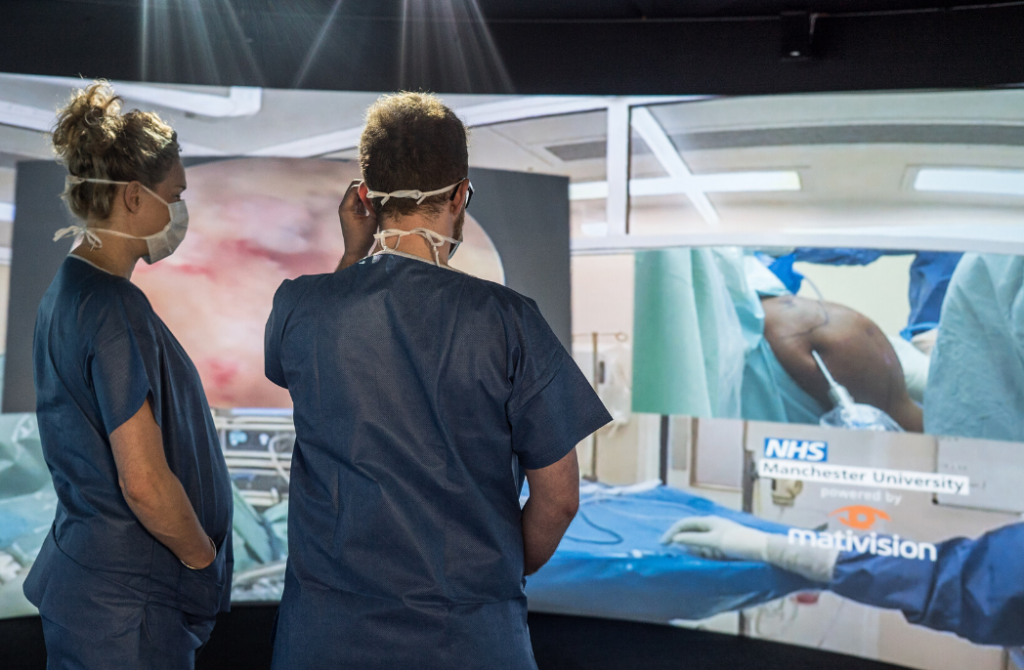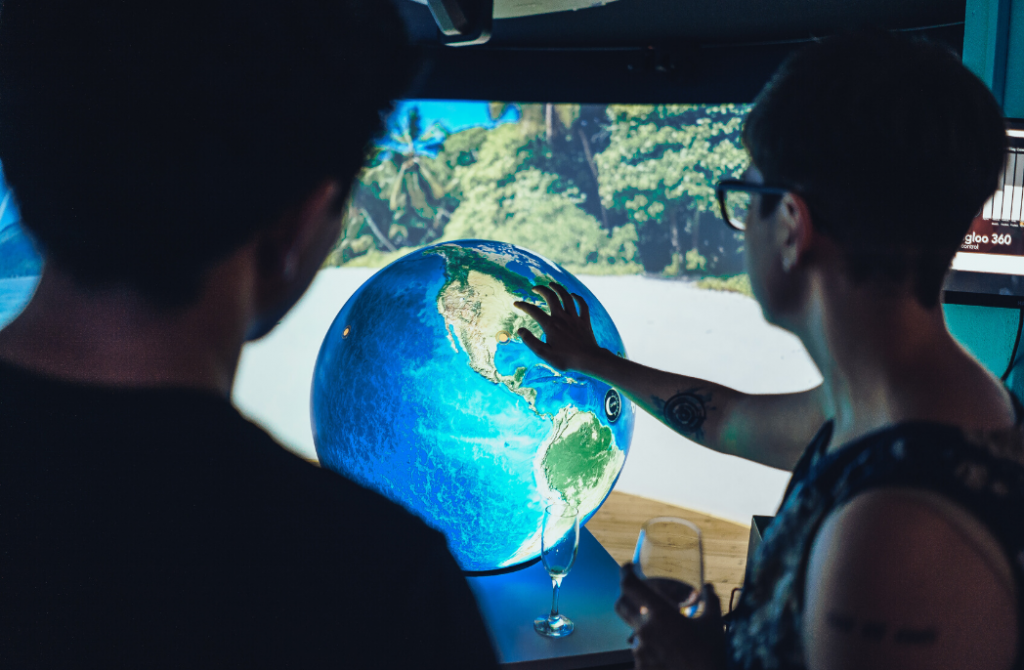
Immersive experiences with shared VR
Immersive experiences with shared VR
Share
Today practitioners in the AEC industry are looking for immersive experiences – technology that can genuinely show them the solutions to their built environment challenges in new and exciting ways. Shared VR is one such platform…
Igloo designs, develops and delivers immersive 360-degree domes, cylinders and all of the enabling technologies.
Stepping inside one of its immersive spaces is a bit like stepping inside a giant VR headset. And, because anything up to 750 people can get inside, it is always a shared experience.
For any AEC (architecture, engineering and construction) companies that create three-dimensional, CAD, CGI or BIM content, use 360-degree films or fly-throughs, or want to show clients or stakeholders how finished concepts will look and feel, Igloo provides a fully-immersive visualisation platform.

Typical applications include: CAD and BIM visualisations, sales and bid support, community and stakeholder engagement, open days and events, virtual site visits, collaborative design reviews, site monitoring and contractor education, and asset and facilities management briefings.
The AEC life cycle
Igloo Shared VR technology can be used throughout the life cycle of a development.
- Planning – getting clients and stakeholders on board with your initial ideas and concepts.
- Design – working through the details of the plans, sightlines and the spatial dynamics.
- Construction – briefing construction teams, plan schedules and work through any adjustments.
- Operation – improving training and enhance facilities and asset management.
The benefits
Igloo Shared VR technology can be used to improve sales processes (by showing how concepts will look and feel), speed up sign-off (by answering planning questions with life-like demonstrations), increase engagement (with community and stakeholder groups), reduce planning errors (by experiencing spatial interactions and complex dynamics, and spotting potential issues during the design phase) and enhance collaboration (by bringing a wide range of teams together, such as design, engineering, clients and end-users).
Goodbye to VR headsets?
One of the issues to date with virtual reality is the necessity of donning a VR headset, which can mean isolation for users, as well as discomfort for some. There are sometimes problems with simulator sickness, not to mention concerns about hygiene. In contrast, Igloo is a shared experience – which makes it ideal for many data visualisation applications.
This means that teams and clients can all look at the same thing at the same time, while making and, importantly, reading eye contact with each other. It’s also possible to switch between the context of a team meeting and the virtuality of a three-dimensional visualisation.

Immersive environments
Immersive environments per se are not a completely new phenomenon, although in years gone by, they were strictly the stuff of theme parks and funfairs, where you could find domes in which you would lie on the floor in a group to watch a spectacle unfold around and above you. Today, with much more sophisticated technology at hands, there are several types of immersive projection environments available.
The difference Igloo provides is that it is first and foremost a content-agnostic platform. Unlike some other platforms (which were created to deliver a specific type or format of content), Igloo was designed to be open. It’s compatible with a wide range of industry-standard tools. Three-dimensional data from tools like Revit, Navisworks and Sketchup can be visualised in an Igloo cylinder at the click of a button. There is also the possibility to build dedicated model importers and functionality.
Added to this, 360-degree images, videos or CGI can be layered and displayed (by dragging and dropping them into the Igloo media player). And photogrammetry and laser scans can be added too.
Another feature of the technology is its portability and flexibility. The cylinders can be erected in various locations, and simply transported between them. The system can be used as a simulator one day, a visualisation platform the next and a stakeholder engagement tool the day after.
An important factor to note is that Igloo can be used by non-technical people via a range of easy-to-use touch screen controllers and interfaces. Using a standard iOS or Android device, users are able to build and deliver their presentations, with content from multiple sources.
This article first appeared in AR162 and an Igloo cylinder was a feature of the inaugural Business of Architecture and Design conference (BoAD).
Click here to read about an Igloo case study.
















